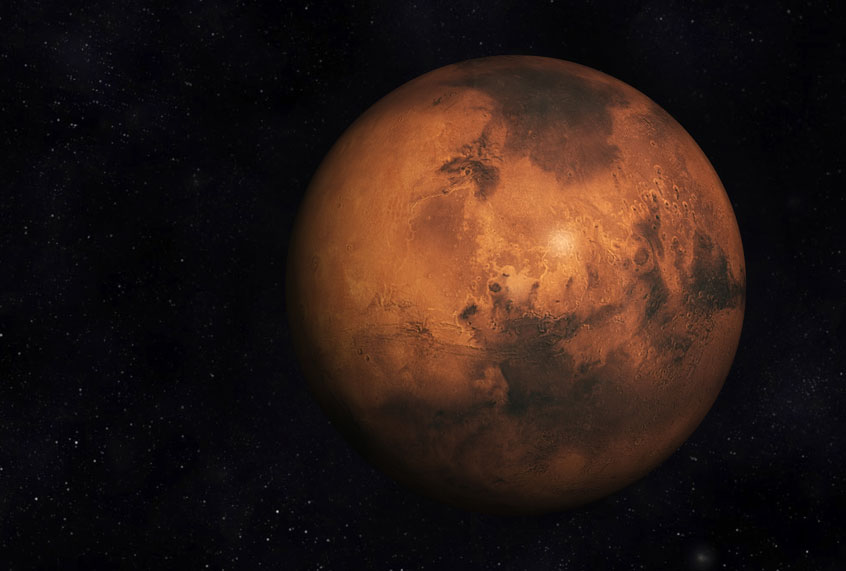On Earth, there is still a lot to be learned about the planet Mars. From wondering if Martians ever existed (or still do) to the unknowns about the role water once played on the Red Planet, astronomers continue to search for answers.
A new study published in the Journal of Geophysical Research: Planets, offers a fresh twist in the puzzle to understanding how Mars became the dry, desolate, planet we know today. In the paper, the authors suggest that a 75-mile-wide crater — known as Lomonosov Crater — in the Martian northern lowlands where a meteor strike once generated a massive tsunami, roughly three and a half billion years ago. The finding adds evidence to the hypothesis that Mars once had an ocean.
Study author Francois Costard, a scientist at the French National Centre for Scientific Research, theorizes that an asteroid created an enormous crater, but it also sent a thousand-foot wall of water sweeping around the planet, creating strange landforms on Mars. The theory derives from a visual inspection of Mars’ strange surface features conducted by Costard and his team. The landforms, according to Costard and his colleagues, could only have been created by a large tsunami that slammed into the shore. The researchers examined other candidate craters and ultimately landed on Lomonosov because it was likely formed by a 9-by-12 mile meteor. It also resembles Earth’s marine craters, which suggests it was created in a shallow ocean.
“We attribute its broad and shallow rim, in part, to an impact into a shallow ocean as well as its subsequent erosion from the collapsing transient water cavity,” the authors asserted in the paper. “The likely marine formation of the Lomonosov crater, and the apparent agreement in its age with that of the Thumbprint Terrain unit (~3 Ga), strongly suggests that it was the source crater of the tsunami.”
Alexis Rodriguez, a co-author of the new study, said the area “may be a window into the subsurface habitability of Mars,” according to The New York Times.
Aside from adding context to the creation of the the Thumbprint Terrain, scientists are interested in the tsunami explanation because it provides more evidence that Mars had oceans after the planet’s magnetic field collapse.
“These results have implications for the stability of a late northern ocean on Mars,” the authors wrote.
Scientists have long believed that Mars lost its water around 3.7 billion years ago. Once its magnetic field collapsed, it is believed that solar particles stripped away the planet’s protective gasses. Water could not have survived without an atmosphere. While scientists aren’t sure how water could exist without an atmosphere, evidence is piling up to suggest water existed after the planet lost its magnetic field.
The theory is at odds with what previous climate models have predicted: that Mars was too cold for an ancient ocean in that timeframe. This leaves scientists with a lot of questions.
“It’s fair to say that we don’t yet fully understand the history of Mars’s climate, and certainly, the climate models we use will continue to be improved,” planetary geologist Paul Byrne told The New York Times.


